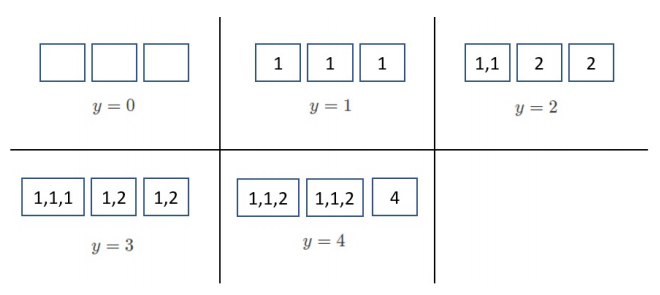IOI '20 P4 - Packing Biscuits
View as PDFAunty Khong is organising a competition with
Each of Aunty Khong's bags will contain zero or more biscuits of each type. The total number of biscuits of type
Help Aunty Khong find out how many different values of
Implementation details
You should implement the following procedure:
long long count_tastiness(long long x, std::vector<long long> a)
- The procedure should return the number of different values of
- The procedure is called a total of
Examples
Example 1
Consider the following call:
count_tastiness(3, {5, 2, 1})
This means that Aunty wants to pack
The possible values of
- one bag containing three biscuits of type
- two bags, each containing one biscuit of type
Since there are

Example 2
Consider the following call:
count_tastiness(2, {2, 1, 2})
This means that Aunty wants to pack
The possible values of
Constraints
- For each call to
count_tastiness, the sum of tastiness values of all biscuits in the pantry does not exceed
Subtasks
- (
count_tastiness, the sum of tastiness values of all biscuits in the pantry does not exceed - (
- (
- (
count_tastinessdoes not exceed - (
Sample grader
The sample grader reads the input in the following format. The first line contains an integer
- line
- line
The output of the sample grader is in the following format:
- line
count_tastinessfor the
Comments